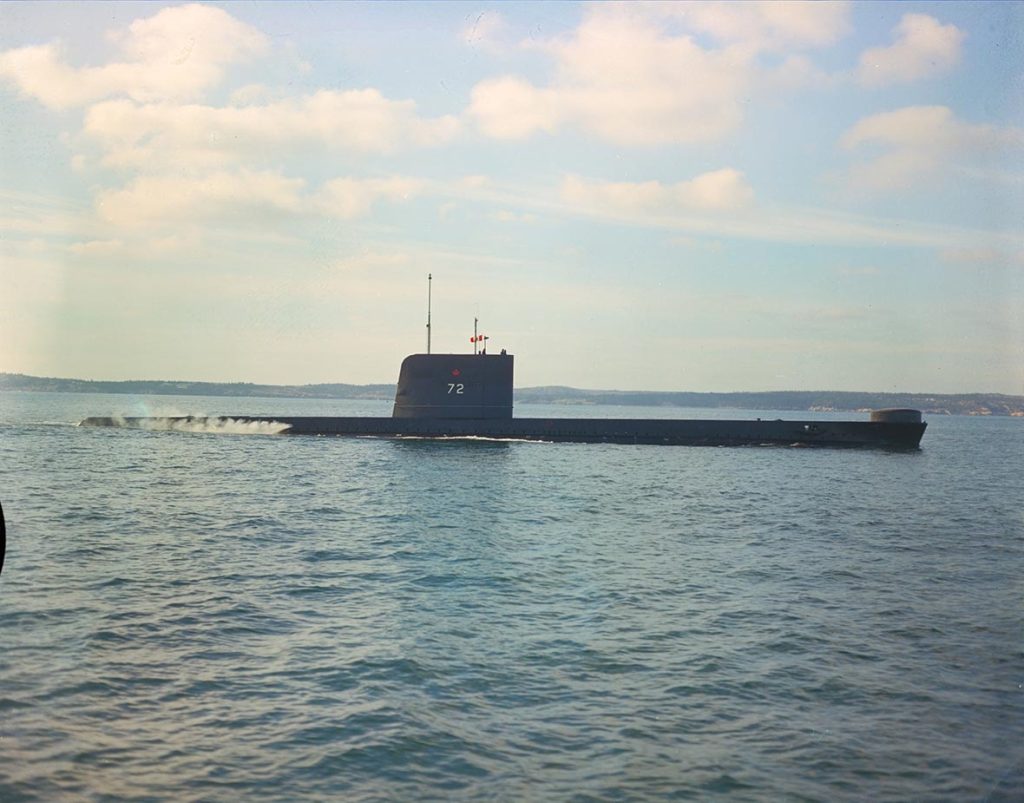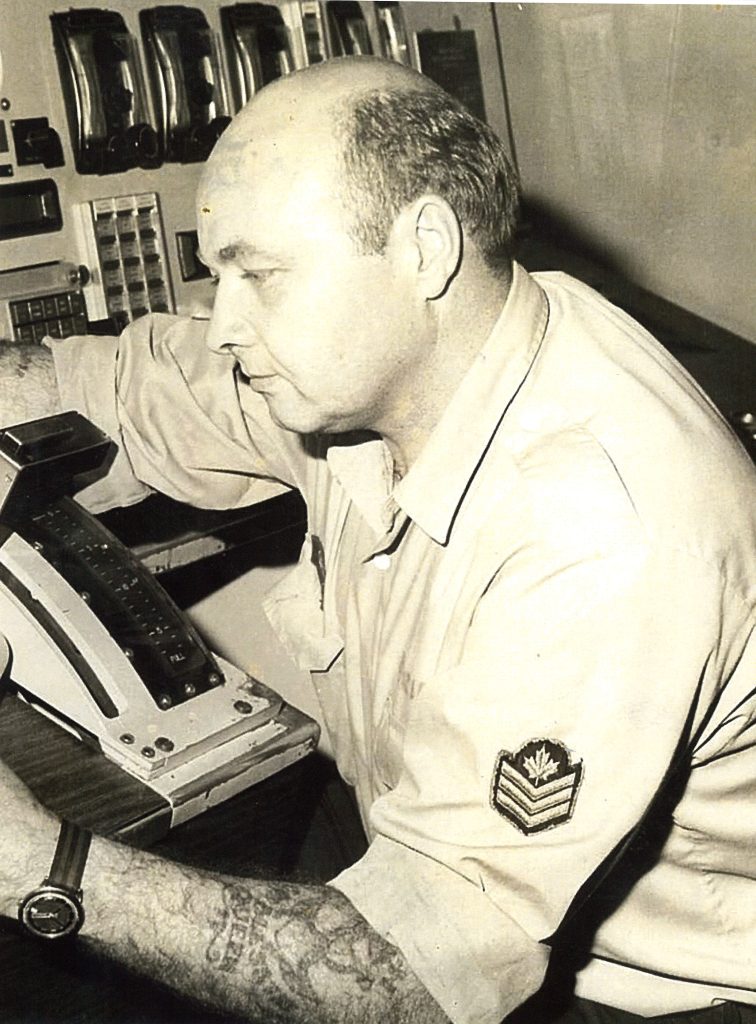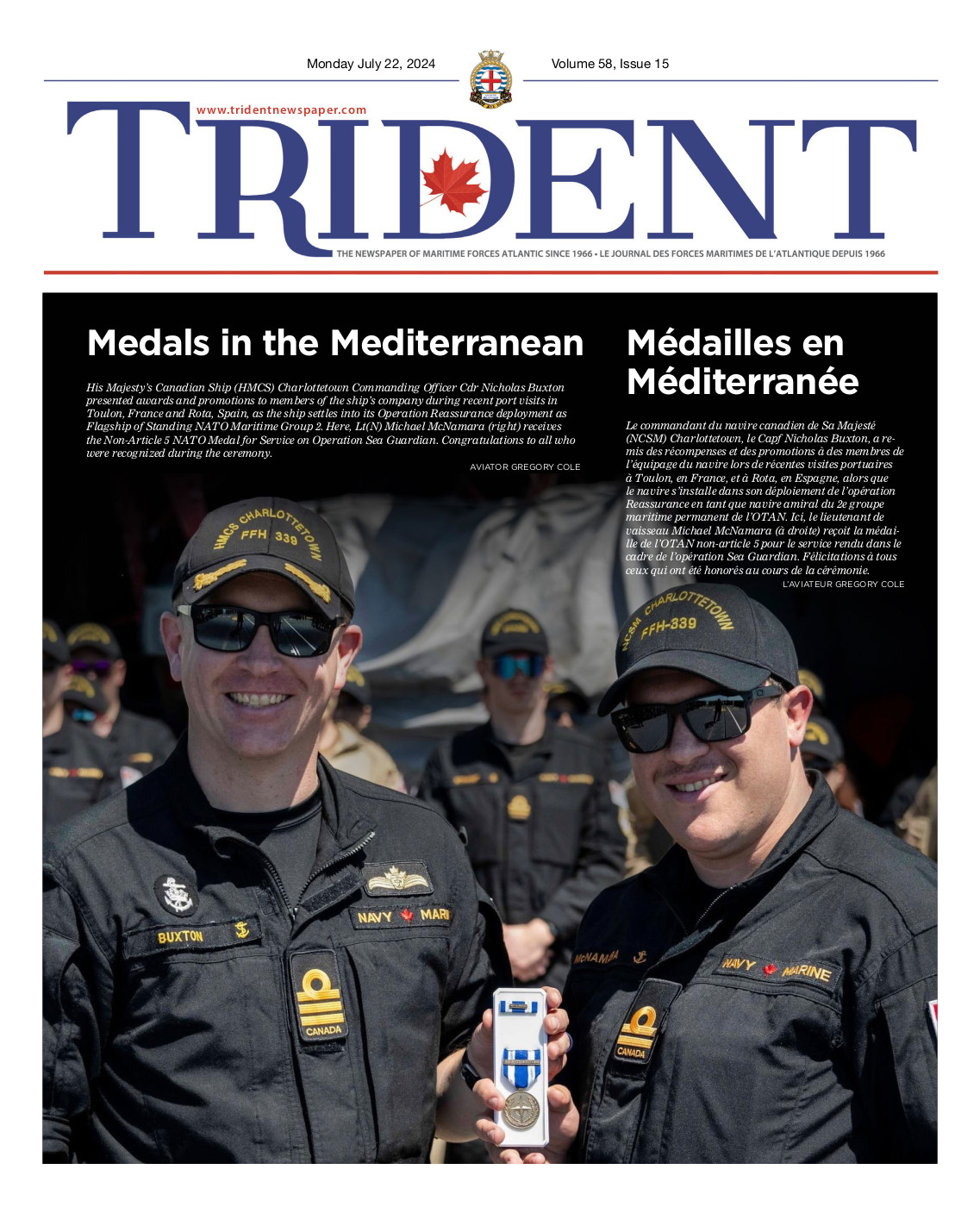
RCN
A Submariner’s life: PO1 Thomas “Keith” Griffin
By Vince Joyce,
Pictou County Military Museum

RCN
Thomas “Keith” Griffin was born on July 29, 1937, in Winnipeg, Manitoba. Mr. Griffin joined the Naval Reserve, HMCS Chippawa Corps, in Winnipeg in 1954 and he served sea time on HMCS Kentville and HMCS Athabaskan. In July 1958, he joined the Royal Canadian Navy Regular Force. This was the start of a very long and distinguished career.
“Griff”, as he was always called, first served on Canadian Destroyers, but in 1962 he was loaned out to the British Royal Navy to serve and learn all about submarines. From February 9, 1962, to June 21, 1968, he served on four Royal Navy Submarines, HMS Aurochs, HMS Andres, HMS Opossum and HMS Orpheus. Mr. Griffin logged 866 days of sea time on these British submarines. After five years he was returned to the Royal Canadian Navy where he was sent to serve on HMCS Onondaga, HMCS Okanagan and HMCS Ojibwa. From June 1967 to August 30, 1976, Mr. Griffin logged 813 days of sea time as a marine technician/engine room artificer aboard submarines that were the pride of the Canadian Navy at the time.
Here is a brief story of the Canadian submarine service: On August 5, 1914, Canada bought its first two submarines from a Seattle shipyard in the United States at the outbreak of the First World War. The subs were bought by British Columbia’s premier Richard McBride and they were called His Majesty’s Canadian Ships CC-1 and CC-2.
In 109 years the Royal Canadian Navy has commissioned 15 submarines. In the beginning, there were only 20 officers and sailors on these first subs. Then, from 1965 to 2000, there were 65 officers and sailors on our submarines. Our four present-day submarines are HMCS Victoria, HMCS Windsor, HMCS Corner Brook and HMCS Chicoutimi and they carry a complement of 48 officers and sailors each.
Mr. Griffin’s subs – HMCS Ojibwa, Onondaga and Okanagan, were called the Oberon class or the big “O’s”. They were powered by a two-shaft diesel-electric system and each had two ASR-1 16-cylinder diesel engines, with a range of 17,000 kilometres.
These subs were built in Great Breton in HM Royal Dockyard Chatham, Kent, South East England. They arrived in Canada in the mid-1960s and they were among the quietest subs in the world. These submarines formed the Halifax-based first Canadian submarine squadron, 6th Submarine Division, and their names were chosen to honour several First Nation communities. In Halifax, these subs were meant to counter the presumed Soviet opponents during The Cold War. Most times they were on very secret missions. A trip at sea could last from only a week to almost three months. On these long trips, they had to head back to port to refuel and re-supply, plus allow for rest and relaxation for the officers and crew.
As stated before, Keith Griffin was part of the engine room crew, made up of 17 sailors. These 17 sailors all slept in the back aft of the sub in the same small area and also ate together. They looked after the main engines and the electrical generators, while “Griff” also looked after the spare gear, and parts for machinery, which were stored everywhere in the sub. Work for the engine room crew never stopped, even when they were tied up at dockside.
The Oberon class submarines had a big bubble on the bow/front of the sub, and this was where the sonar was situated. Another feature of these subs was that they could dive to a depth of 700 feet plus, and they excelled at silent running (still moving). They could also stay under the ice for long periods of time while in the cold waters.
On long trips, these subs and their crew were in constant danger because of the job they were doing. On one long sail, Mr.Griffin’s sub was under the ice in the Greenland Ice sheet, sometimes called the “Gap” for seven days.
Keith Griffin’s best friend aboard the subs and for many years afterwards was Leading Seaman Donald Henry “Buster” Brown, MMM, CD. Buster moved up through the ranks and in 1989 he was appointed to the Admiral’s staff in Halifax where he was promoted to the Command Chief Petty Officer, Maritime Command, a post he held until retirement from the Royal Canadian Navy. In 2001, Buster Brown was lured into the Hollywood business where he worked as Submarine Technical Advisor for the movie K-19 The Widowmaker starring Harrison Ford. Donald “Buster” Brown died on April 11, 2020, and is sadly missed by Mr. Keith Griffin.
Mr. Griffin was honoured many times while he served on the Oberon submarines. Some of his honours were; “Crossing The Equator”, which was King Neptune’s ceremony, a Proclamation certificate for the Arctic Circle while he was aboard HMCS Margaree on April 17, 1977, and again on HMCS Huron on July 21, 1978, which earned him the honour of being declared a member of our Numb Friends League (Northern Branch). As a leading seaman, Griffin was presented a certificate from HMCS Onondaga, noting that he received the last “Rum Tot” among the crew on March 30, 1972.
During his long naval service, Mr. Griffin spent 2,454 days at sea between June 25, 1954, and July 29, 1979. Keith retired from the Royal Canadian Navy in July 1981 and from the Reserve in July 1991 at the rank of Petty Officer 1st, class.
Mr. Griffin has done many more great things in his civilian life which are too numerous to state here, and has been married to Mrs. Marilyn Campbell-Griffin from “Mulgrave Row”, Stellarton, Nova Scotia for more than 50 years. The last question that I asked him was, “Would you do it all over again if you had the chance?”
His response was, “Yes, but I would do it differently. You see, in the submarine service it was very hard to move up in the ranks because there were only a few crew members aboard the sub, so in order to move up a crew member had to retire or pass away. And remember that we were all about the same age. But don’t get me wrong, I’m very proud of my service to Canada!”





